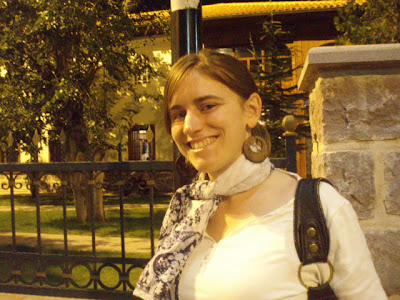This sounds easy enough, but the problem is that Turkish people have a very different sense of taste than do Americans or Spaniards. The lighting section of Koctas, the Turkish equivalent of Home Depot, has a full stock of lights that range from tacky to gaudy to blindingly sparkly.
 Dangly is also a trend
Dangly is also a trend
 I actually picked one of these purple rhinestone-y ones today and considered buying it, as it was one of the less ugly things in the store
I actually picked one of these purple rhinestone-y ones today and considered buying it, as it was one of the less ugly things in the store
 Iced out, if possible with hints of purple
Iced out, if possible with hints of purple
It is impossible to find something normal, understated, or tasteful in this store. Based on the few excursions I've had through furniture stores here, I've concluded that the free furniture we got from my Turkish teacher here is probably the best looking furniture in the entire country, and I am even more thankful that we got it.
But we did manage to find a lamp we liked, and then headed back to ElectroWorld to pick up my oven. I found one that I liked for a reasonable price and asked the saleswoman if there were any left. She looked around, a bit bewildered, then hollered to a guy in a different aisle, who responded that they were fresh out of this model. The woman apologized and directed me to another pile of ovens that were significantly more expensive, which I wasn't interested in. At this point we'd been comparing prices at different stores for nearly two hours and were not excited about the prospect of going back to Migros to pick up a smaller oven for the same price as this one when we would much rather be heading home to eat lunch. But I wasn't willing to spend the extra money when I could get the same oven at Migros for much less, so we started walking out. But then my roommate spotted a display of ovens at the exact price as the one I'd just asked about, so we stopped to look and discovered that -- it was the oven I'd asked about, the one we'd been told was out of stock. The saleswoman heard us burst into laughter and came to investigate the matter. "Oh, I guess we did have those," she said nonchalantly.
I hope she doesn't work on commission.
Of course, this is Turkey, so this kind of thing happens all the time. One of these days I'll get used to it.











